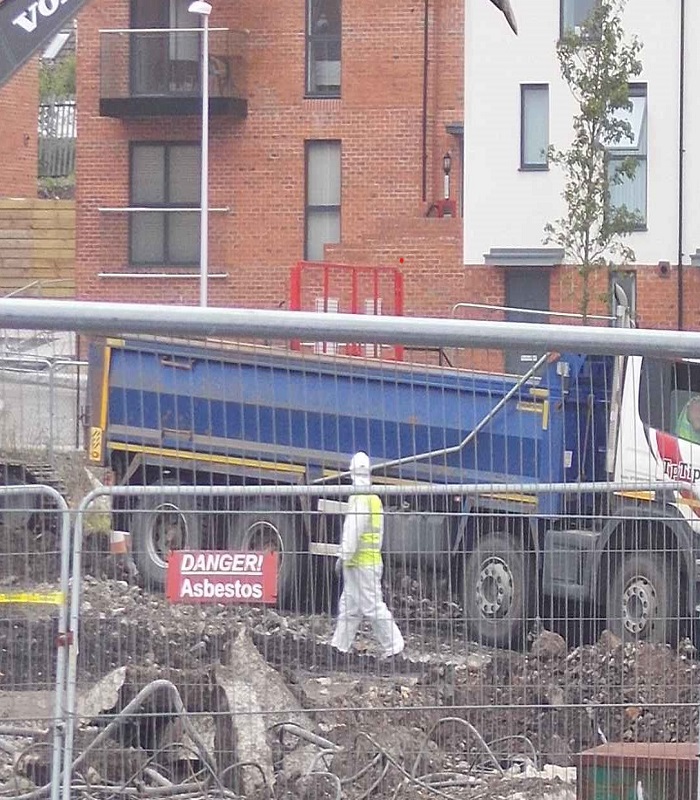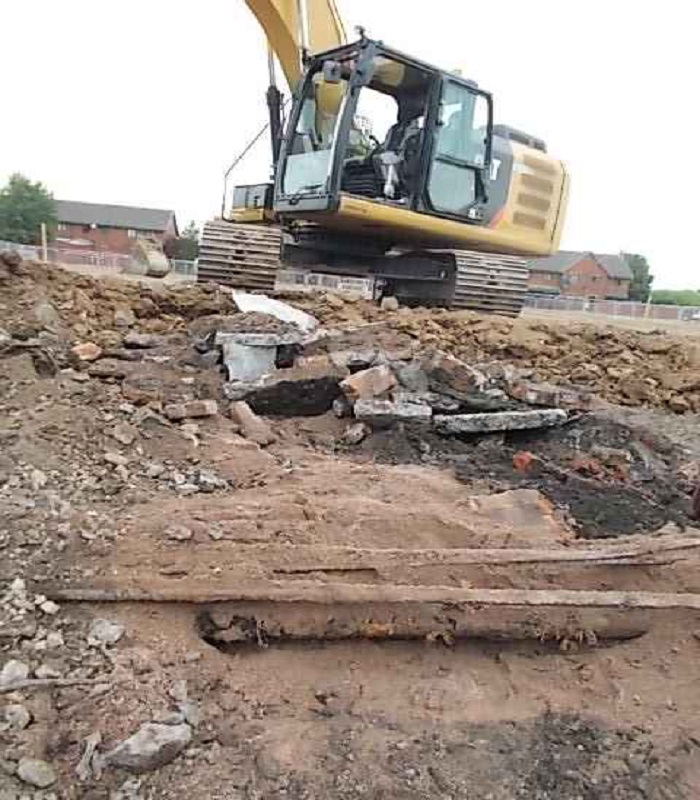Delivering analytical asbestos air testing services to the contaminated land and land remediation sector has become a significant part of the services we offer alongside asbestos surveys, air testing and sample analysis. We have assisted numerous clients in the development of their land and ensured a safe working environment for ground-workers and neighbouring personnel.

We can conduct personal monitoring to site workers to ensure control measures are effective and that the RPE/PPE worn is suitable for the task, as well as background site perimeter monitoring to ensure control measures are adequate for bordering residents and properties.
During site works a watching brief is highly recommended. This will include visual assessments and sample identification of Asbestos Containing Materials (ACMs) during ground and excavation works. In addition, we can help develop and review both Clients and Contractors Remediation Strategies, Risk Assessments and Method Statements, as well as producing a Validation Report at the end of the project.
It is not uncommon to find land which has either been contaminated with Asbestos Containing Materials (ACMs) from buildings which used to exist on the site or where ‘made ground’ has meant the introduction of contaminated soils and hardcore into what would previously have been non-contaminated ground.
It is not uncommon to find land which has either been contaminated with Asbestos Containing Materials (ACMs) from buildings which used to exist on the site or where ‘made ground’ has meant the introduction of contaminated soils and hardcore into what would previously have been non-contaminated ground.
Land Remediation FAQs
What is Asbestos-related Land Remediation?
It refers to the process of cleaning up and restoring land that has been contaminated by asbestos.
Why is Asbestos-related Land Remediation necessary?
It is necessary to make the land safe for use, by removing the asbestos-contaminated material, so that it no longer poses a risk to human health or the environment.
How is Asbestos-related Land Remediation conducted?
It will often need to be carried out by a Licensed Asbestos Removal Contractor (LARC), but in all cases it must be undertaken by suitably trained personnel, working in accordance with Health & Safety Executive Approved Codes of Practice. The remediation work should be monitored by a UKAS accredited air monitoring and surveying company.
Who is qualified to conduct Asbestos-related Land Remediation?
Licensed Asbestos Removal Contractors (LARC) are qualified to undertake this work and the work should also be monitored by a UKAS accredited air monitoring and surveying company.
What are the steps involved in Asbestos-related Land Remediation?
Site assessment, developing a remediation plan, removing the asbestos, disposing of the asbestos-contaminated material, monitoring air quality, backfilling and conducting a final site inspection.
How is the asbestos-contaminated material removed and disposed of safely?
Smaller quantities of asbestos will be removed by hand, using a technique known as a ‘litter pick’ whilst larger areas and quantities may involve heavy machinery, whilst at the same time employing fibre suppression techniques to ensure the works are undertaken safely. Works will often involve air monitoring close to the operatives undertaking the work and also around the perimeter of the site to ensure there is no risk to those in the vicinity. Contaminated waste will be removed from the site by a Licensed Waste Carrier and taken to a landfill site which is licensed to take asbestos waste.
What are the risks associated with Asbestos-related Land Remediation?
When dealing with land contaminated with asbestos, the asbestos containing materials will more often than not be in very poor condition and will consist of loose asbestos fibres. These loose fibres can be inhaled and can cause serious health problems such as lung cancer, mesothelioma, and asbestosis.
How is air quality monitored during Asbestos-related Land Remediation?
Air monitoring pumps are placed on or near the operatives undertaking the work and can also be placed around the perimeter of the site. Monitoring may be undertaken at regular intervals or continuously during the removal work to ensure that fibre levels are acceptable. If an unacceptable fibre level is detected, work will stop in order that the removal method can be amended accordingly.
How is the site restored after Asbestos-related Land Remediation?
After the asbestos-contaminated material is removed, the site may be backfilled to restore it to its original condition or developed as required.
What are the regulations and guidelines for Asbestos-related Land Remediation?
The regulations and guidelines for Asbestos-related Land Remediation are set out by the Control of Asbestos Regulations 2012 (CAR 2012) and the Control of Asbestos Regulations 2012: Interpretation for Managing and Working with Asbestos in Soil and Construction & Demolition materials: Industry Guidance (shortened name CAR-SOIL). The regulations set out the legal requirements for the safe removal, handling and disposal of asbestos.


